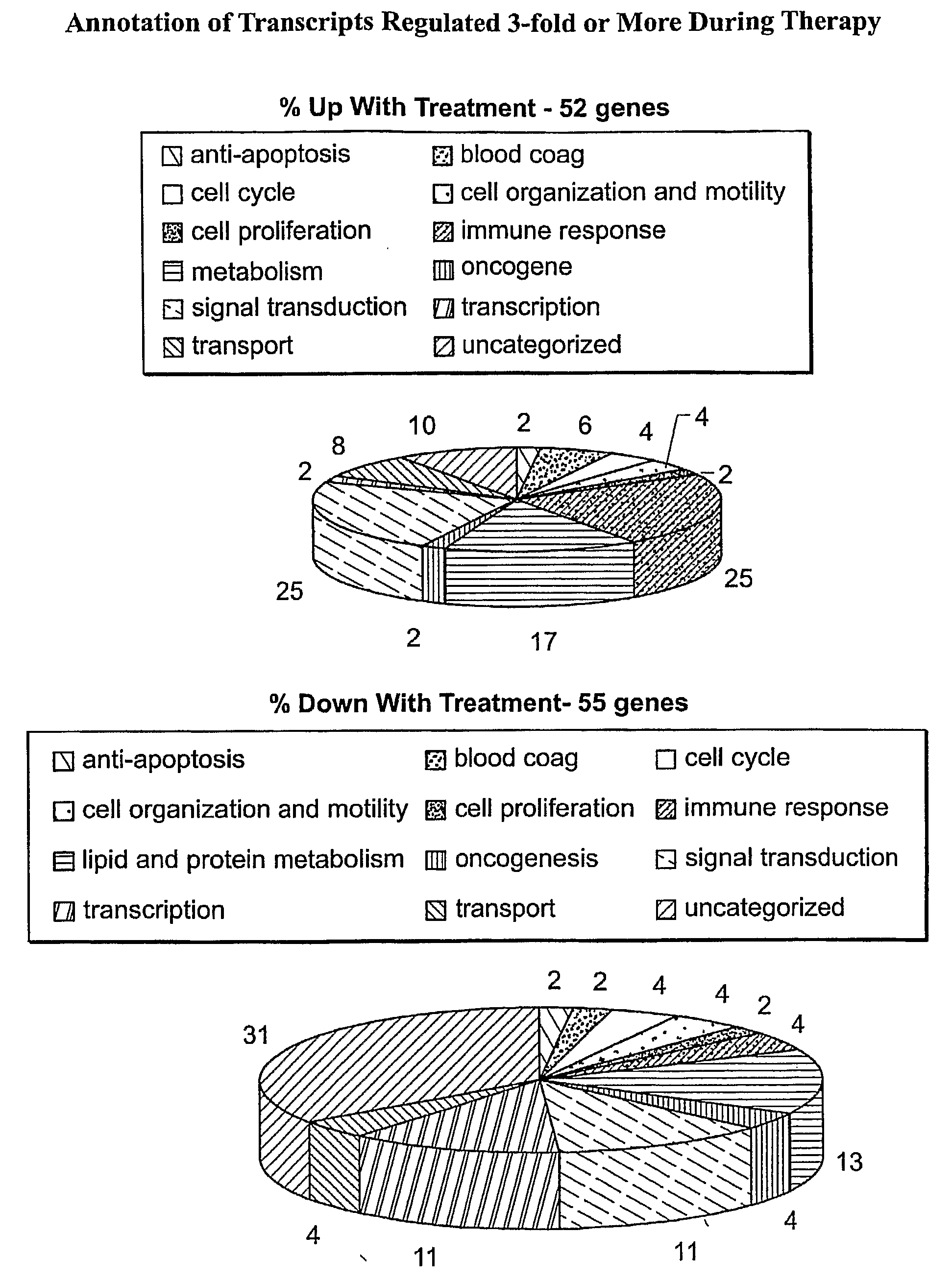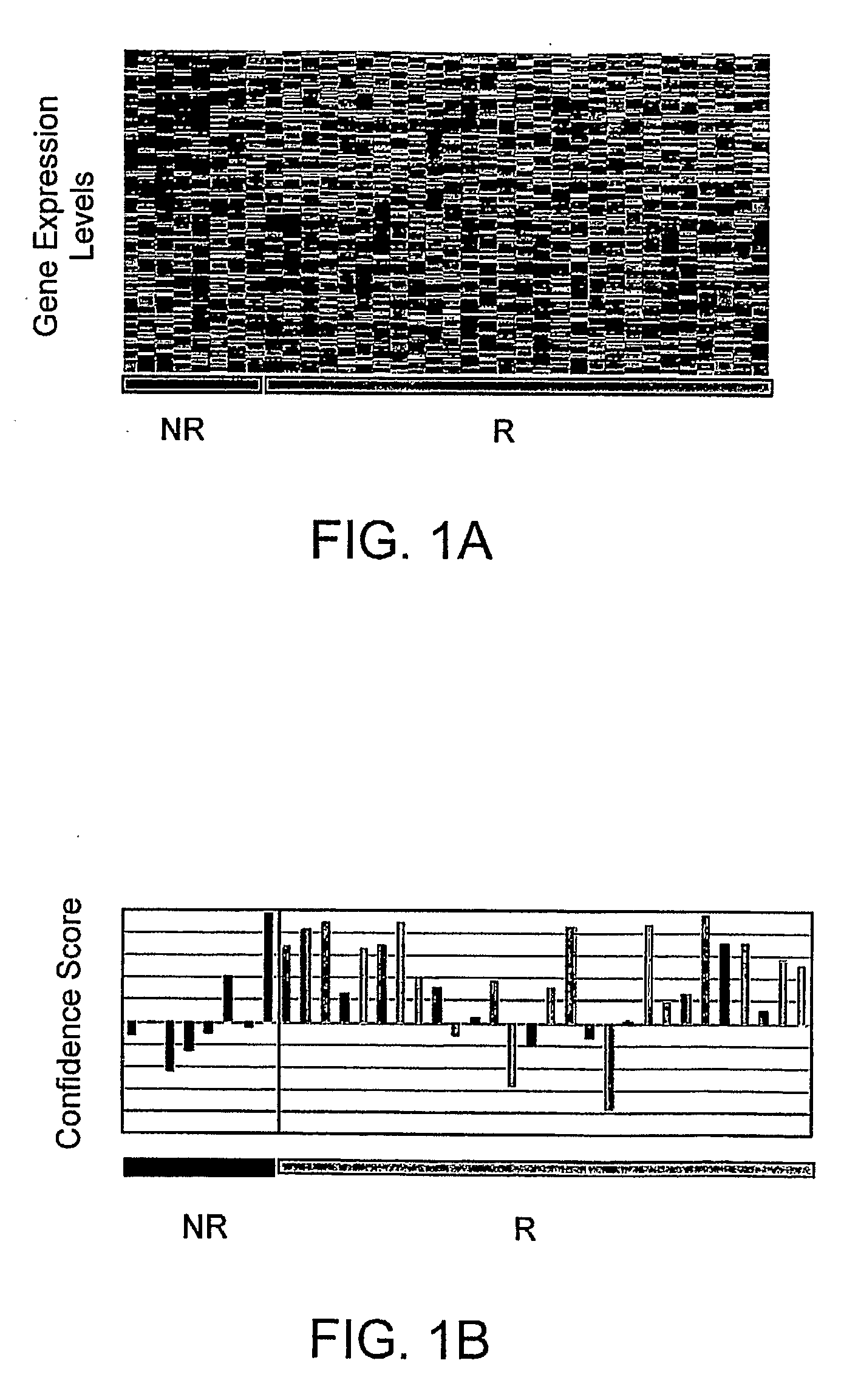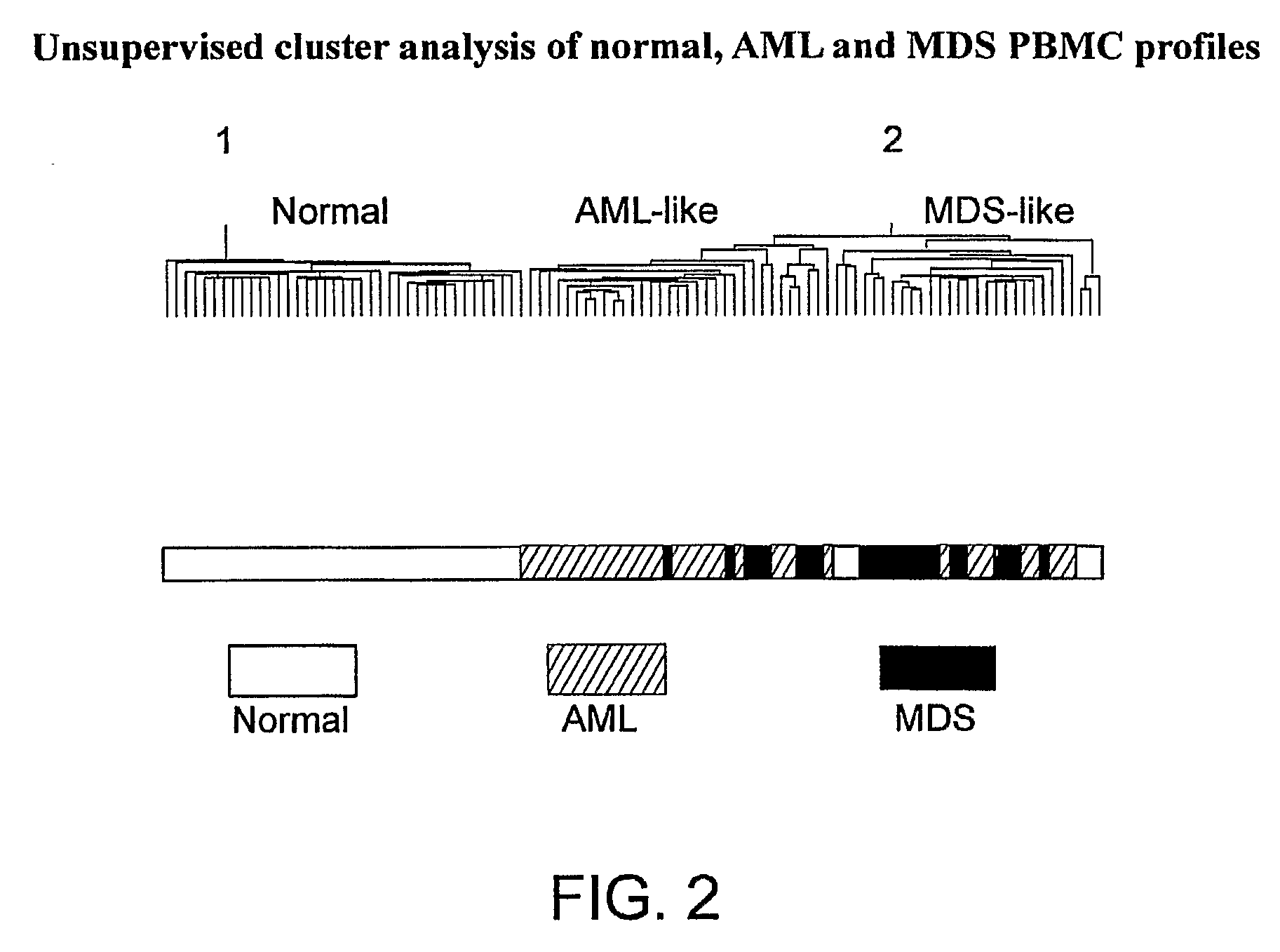Methods and Systems for Diagnosis, Prognosis and Selection of Treatment of Leukemia
a leukemia and prognostic gene technology, applied in the field of leukemia diagnostic and prognostic genes, can solve the problem that the mdr phenotype fails to account for all cases of gemtuzumab ozogamicin resistan
- Summary
- Abstract
- Description
- Claims
- Application Information
AI Technical Summary
Benefits of technology
Problems solved by technology
Method used
Image
Examples
example 1
Clinical Trial and Data Collection
Experimental Design
[0176]AML patients (13 females and 23 males) were exclusively of Caucasian descent and had a median age of 45 years (range of 19-66 years). Inclusion criteria for AML patients included blasts in excess of 20% in the bone marrow, morphologic diagnosis of AML according to the FAB classification system and flow cytometry analysis indicating positive CD33+ status. Participation in the clinical trial required concordant pathological diagnosis of AML by both an onsite pathologist following histological evaluation of bone marrow aspirates. A summary of the cytogenetic characteristics of the patients is presented in Table 11.
TABLE 11Cytogenetic characteristics of PG consented AML patientscontributing baseline samples in 0903B1-206-US.PG ConsentedCytogenetic Characteristic(s)(n = 36)*Normal karyotype12 (33%)Complex karyotype (>3 abnormalities) 6 (17%)Other 6 (17%) +8 4 (11%)not determined3 (8%) −73 (8%)inv (16)3 (8%)−5q2 (6%)−7q1 (3%)−5q1 ...
example 2
Disease-Associated Transcripts in AML PBMCs
[0182]U133A-derived transcriptional profiles of the 36 AML PBMC samples were co-normalized using the scaled frequency normalization method with 20 MDS PBMC and 45 healthy volunteer PBMC. A total of 7879 transcripts were detected in one or more profiles with a maximal frequency greater than or equal to 10 ppm (denoted as 1 P, 1≧10 ppm) across the profiles.
[0183]To identify AML-associated transcripts, average fold differences between AML and normal PBMCs were calculated by dividing the mean level of expression in the AML profiles by the mean level of expression in normal profiles. A Student's t-test (two-sample, unequal variance) was used to assess the significance of the difference in expression between the groups.
[0184]For unsupervised hierarchical clustering, the 7879 transcripts meeting the expression filter 1P, 1≧10 ppm were used. Data were log transformed and gene expression values were median centered, and profiles were clustered using...
example 3
Transcriptional Effects of Therapy
[0189]A total of 27 AML patients provided evaluable baseline and Day 36 post-treatment PBMC samples. The U133A-derived transcriptional profiles of the 27 paired AML PBMC samples were co-normalized using the scaled frequency normalization method. A total of 8809 transcripts were detected in one or more profiles with a maximal frequency greater than or equal to 10 ppm (denoted as 1P, 1≧10 ppm) across the profiles.
[0190]To identify transcripts altered during the course of therapy, average fold differences between Day 0 and Day 36 PBMC profiles were calculated by dividing the mean level of expression in the baseline Day 0 profiles by the mean level of expression in the post-treatment Day 36 profiles. A Student's t-test (two-sample, unequal variance) was used to assess the significance of the difference in expression between the groups.
[0191]GO-based therapy-associated transcripts in peripheral blood were identified by comparing mean levels of expression...
PUM
| Property | Measurement | Unit |
|---|---|---|
| numerical threshold | aaaaa | aaaaa |
| nucleic acid | aaaaa | aaaaa |
| multi-drug resistance | aaaaa | aaaaa |
Abstract
Description
Claims
Application Information
 Login to View More
Login to View More - R&D
- Intellectual Property
- Life Sciences
- Materials
- Tech Scout
- Unparalleled Data Quality
- Higher Quality Content
- 60% Fewer Hallucinations
Browse by: Latest US Patents, China's latest patents, Technical Efficacy Thesaurus, Application Domain, Technology Topic, Popular Technical Reports.
© 2025 PatSnap. All rights reserved.Legal|Privacy policy|Modern Slavery Act Transparency Statement|Sitemap|About US| Contact US: help@patsnap.com



